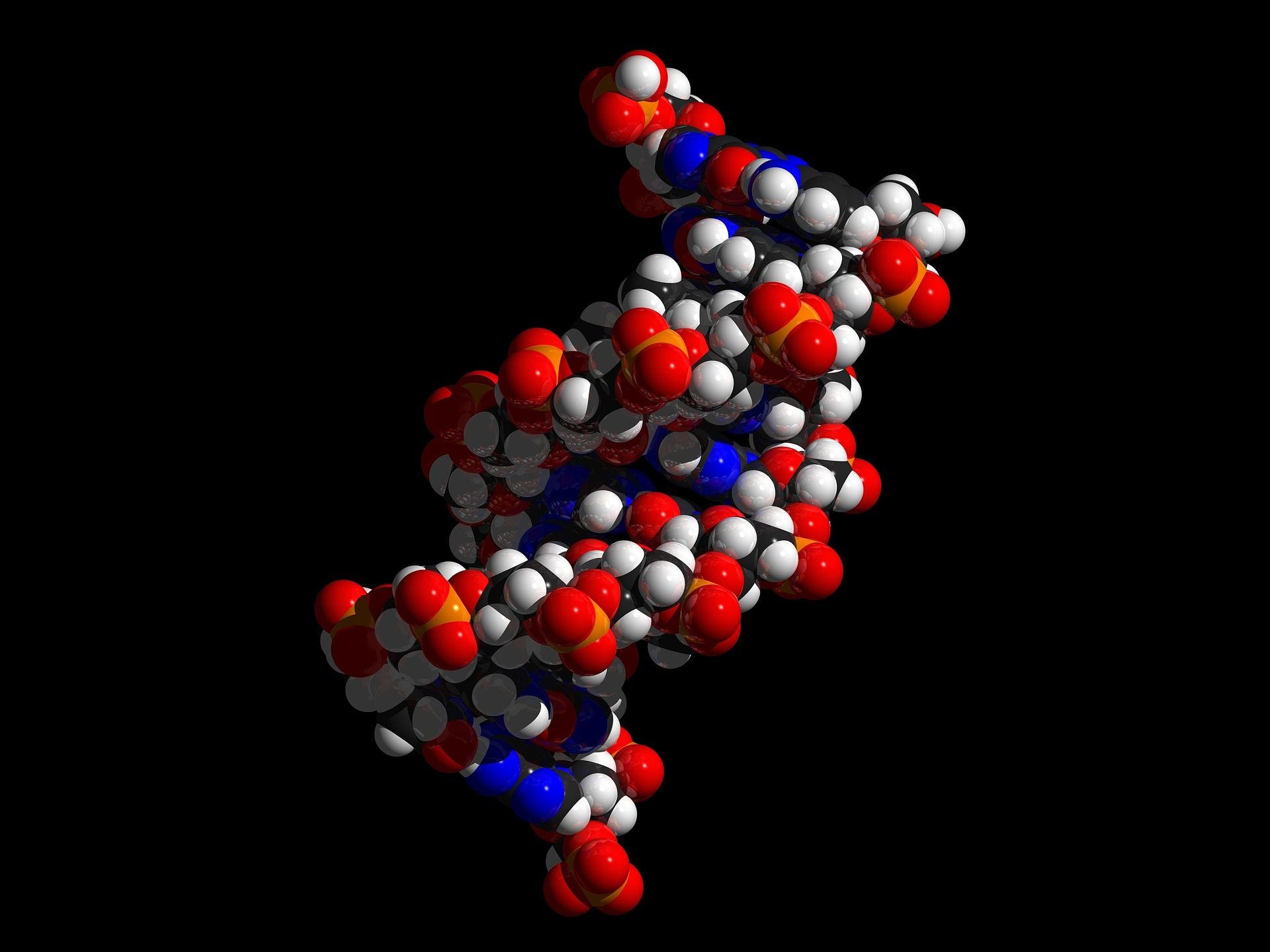
The most common inorganic (non-carbon) compounds have molecular weights no more than about 200 or 300. Organic compounds can run easily into the many hundreds and thousands.
DNA by comparison possesses a molecular weight, depending on the variety, of billions, even trillions.
Examining a typical model of the DNA molecule, it appears extremely complex. However, this is from a ‘trees versus the forest’ viewpoint. When viewed as a united structure, DNA assumes a basic form – that of a twisting staircase.
DNA is the staircase of life.
Molecular Weight and Molecules
The atomic weight of an element is defined as the ratio of the mass of an atom of that element to 1/12 the average weight of an atom of carbon-12.
The molecular weight of a compound is the composite of the weight of all of the atoms, that is the sum total of the atomic weights of the constituent atoms, according to the number of the atoms.
Thus the molecular weight, say, of barium chloride, BaCl₂ is equal to the atomic weight of the one barium atom, plus the two chlorine atoms, which equals 137.33 + 2(35.45) = 208.23.
The high molecular weight of DNA illustrates the extreme complexity of the molecules.
DNA Staircase Structure
Viewed as a whole, a spiral staircase twists in one direction, upward until the uppermost destination floor is reached. DNA, because it can be split lengthwise, is considered a double helix. Imagine each helix being one of the banisters of the spiral staircase.
In general terms, the banisters are formed of alternating phosphate and deoxyribose sugar units. The steps consist of pairs of nitrogenous bases.
DNA ‘Banisters’
The two banisters, consisting of alternating phosphate-deoxyribose units, each face the 5-member rings of the deoxyribose units inward, facing the steps. These rings are what actually bond to the edges of the steps (discussed below), holding them in place. The oxygen atom on each ring faces in the same direction as the one next to it on the same banister, whether “up” or “down.”
If the oxygen atoms of the left banister all face “up,” the oxygen atoms of the right banister all face “down.” That is, they face in the opposite direction.
Constructing the Steps
In wooden staircases, the steps are the same general size and shape. It’s the same for the steps of the DNA spiral.
DNA’s steps must consist of a purine base plus a pyrimidine base. The choices are limited to two: adenine joined to thymine (AT) or guanine joined to cytosine (GC).
A pyrimidine base is a 6-member carbon ring with a nitrogen atom replacing the carbons at the 1 and 3 position. A purine base is a pyrimidine base attached to an imidazole ring. An imidazole ring is a double-unsaturated 5-member carbon ring with two nitrogen atoms replacing carbon atoms.

An adenine plus a thymine would be almost identical in size and shape to a guanine plus a cytosine – but size is only one of the two criteria.
Adenine and thymine – and guanine and cytosine – must be able to join exclusively via hydrogen bonding.
This is because it must be possible for DNA to be separated into two halves, like the halves of a zipper. Other bonds are too strong. Hydrogen bonds are just right.
Watch Your Step on the DNA Staircase

The ordering of the steps is of great importance. Although DNA information storage is strikingly similar to computer data storage, it is by the sequence of the steps that most of the DNA’s information is conveyed, much as the ordering of letters of the alphabet determine what word and what meaning – is conveyed.
DNA’s “meaning” dictates the species of an animal or plant, as well as its individual characteristics.
Note: You might also enjoy Components and Functions of Neurons
References:
- Integrated DNA Technologies. Molecular Facts and Figures
- Kimble, John W. Base Pairing
- The University of Illinois at Chicago. DNA Structure
- Champaign Schools. Exploring the Basic Structure DNA
- National Institutes of Health. Diagram of the overall structure of DNA
